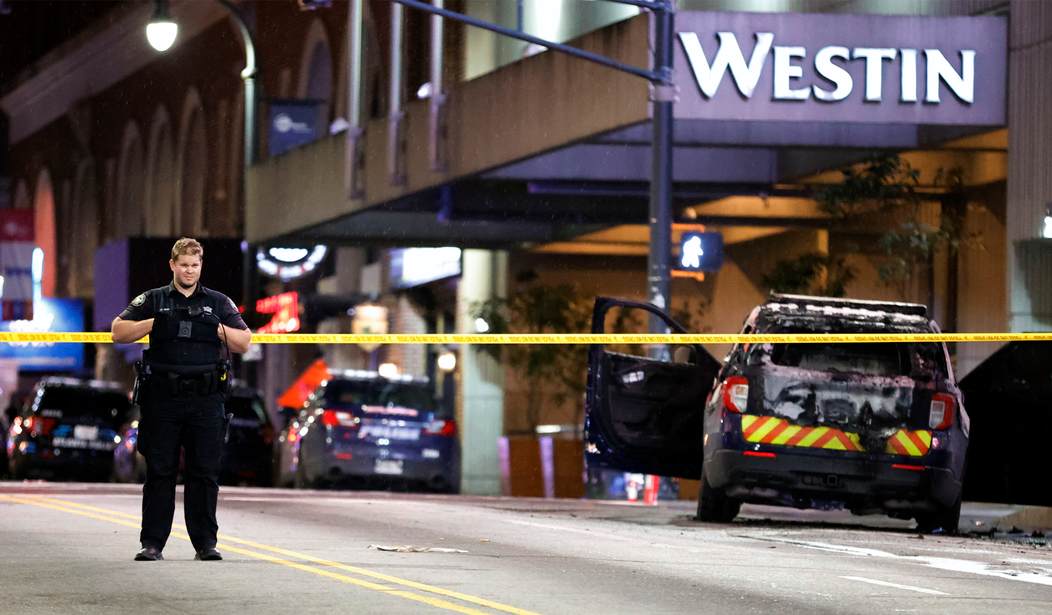2020 was a banner year for both gun sales and an increase in violent crime, and gun control activists have been desperate to link those two facts together for the past three years. More guns leads to more crime, or so they argue, so it stands to reason that as gun sales soared so too did the number of homicides, armed robberies, and assaults with a firearm.
The problem with that argument is that crime rates rise and fall, while the number of firearms in private hands only grows larger. If more guns truly did equate to more crime, then this country would see an annual rise in violent crimes year after year, and that’s not happening. In fact, according to the FBI’s latest annual report, homicides and other violent crimes actually dropped last year, which should be an impossibility if the gun controllers were right.
Violent crime dropped 1.7%, and that included a 6.1% decrease in murder and non-negligent manslaughter. Rape decreased 5.4% and aggravated assault dropped 1.1%, but robbery increased 1.3%. Violent crime had also decreased slightly in 2021, a big turnaround from 2020, when the murder rate in the U.S. jumped 29% during the pandemic that created huge social disruption and upended support systems.
The violent crime rate of 380.7 per 100,000 people was a tick better than 2019 — the year before the pandemic hit the U.S., when the rate was 380.8 per 100,000 people.
Richard Rosenfeld, criminal justice professor emeritus at the University of Missouri-St. Louis, said the drop in violence can be attributed largely to the fact that the “stresses and strains” associated with the pandemic have abated.
“By and large what we’re seeing is simply a return to something approaching normal after the big changes associated with the pandemic,” Rosenfeld said.
The news from the FBI’s latest report isn’t uniformly good. As noted above, there was a slight increase in the number of aggravated assaults, and an even larger increase of 8.1% in reported carjackings across the country. Overall, however, the data shows a definite dip in reported crimes, and according to crime analyst Jeff Asher current data shows that trend is continuing this year. Asher did find one aspect of the FBI’s report to be problematic, however.
One thing I don’t like is a new part of the report estimating the number of “non-fatal gun violence” victims. This sounds like non-fatal shootings — which would be tremendous! — but is actually made up of all violent crimes with a gun that didn’t involve a fatal shooting. The overbroad definition means that a robbery with a gun or flashing a firearm in a threatening manner are both considered “non-fatal gun violence.” That means the metric is virtually useless for evaluating shootings where an individual was injured versus killed as those incidents are largely drowned out by other types of violent crimes. Moreover, the “non-fatal gun violence” figures are drawn strictly from NIBRS so the figures are far less accurate than the murder data which is drawn from both NIBRS and SRS.
Keep that in mind when you hear media reports about a small increase in the number of crimes reported in which a gun was involved.
Just out of curiosity, I took at look specifically at the crime stats for the state of Tennessee, which adopted permitless carry back in 2021. Last year was the first full year that the law was in place, and according to the fundamental ideology of the anti-gunners, the state should have seen a pretty sharp increase in gun-related crime. As you can see, the opposite actually took place.

Tennessee actually had the biggest one-year drop in homicides in decades, falling from 10.2 per 100,000 people in 2021 to 8.6 per 100,000 in 2022; outpacing the national decline in homicides. Aggravated assaults and robberies also declined, though not as much as the state’s murder rate.


Meanwhile, California with all of its gun control laws was one of the few states to buck the national trend and see an increase in violent crime.

While homicides dipped slightly in California last year, robberies ticked up alongside a major increase in aggravated assaults.

It’s pretty clear that recognizing the right to keep and bear arms doesn’t automatically lead to more violent crime, just as imposing more restrictions on lawful gun owners doesn’t automatically make a state like California any safer. These new numbers should finally put the gun control lobby’s “more guns equals more crime” argument to rest, but we know that it won’t do any such thing. Heck, they’ll use the failure of strict gun control regimes to stem an increase in violent crime as just another excuse to clamp down even more on our Second Amendment rights when the truth is staring them right in the face. It’s gun control they’re interested in, after all, not crime control, and whether the stats are good or bad they can always be twisted to suit their anti-2A agenda.









Join the conversation as a VIP Member